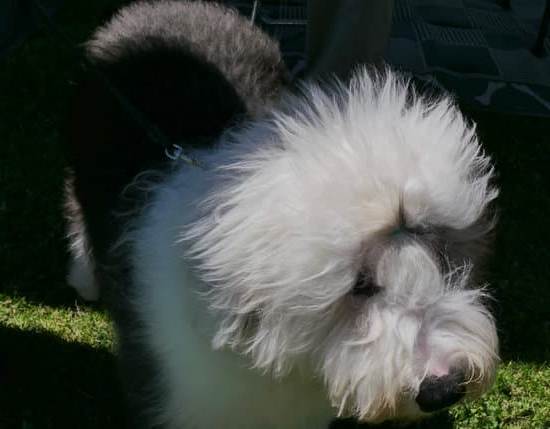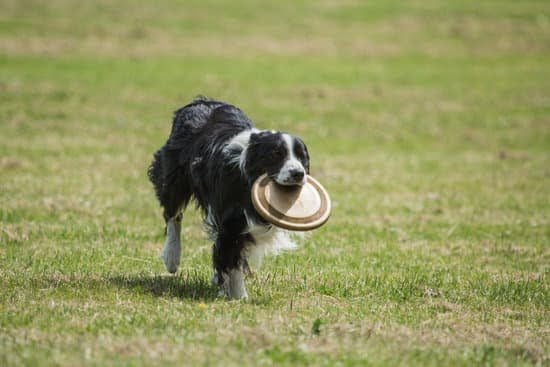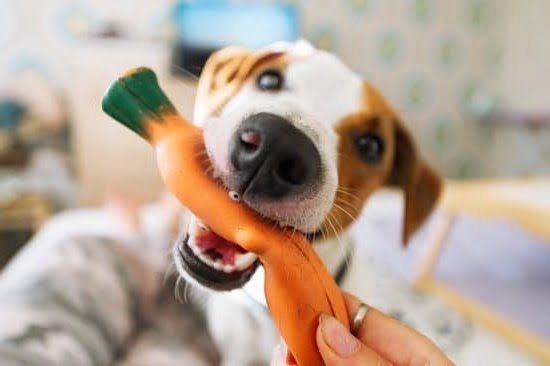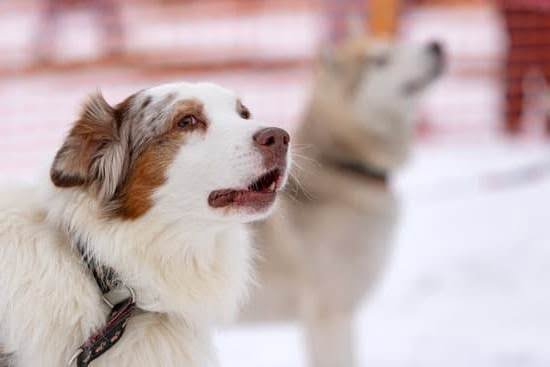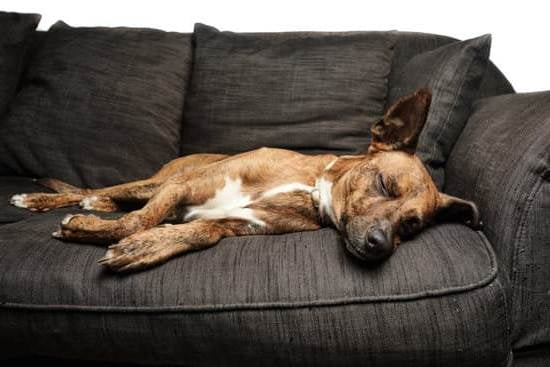Potty training is an essential aspect of pet ownership, especially when it comes to small breed dogs. These adorable and compact canine companions may present unique challenges and characteristics that require a specific approach to ensure successful potty training. Understanding the importance of proper potty training for small breed dogs is crucial in creating a harmonious living environment for both pets and their owners.
Small breed dogs, such as Chihuahuas, Yorkshire Terriers, or Shih Tzus, have distinct anatomical differences and smaller bladder sizes compared to larger breeds. This can affect their ability to hold urine for extended periods, making it imperative to establish a consistent potty routine. Additionally, small breed dogs often exhibit peculiarities in their potty habits and tendencies that necessitate tailored training methods.
To succeed in potty training a small breed dog, there are several preparations that need to be made. Choosing the right size of crate or playpen is essential in providing a comfortable space for your furry friend while regulating their access to the designated potty area. High-quality absorbent pads or grass patches can be useful for indoor training sessions, while having necessary cleaning supplies on hand ensures accidents are managed effectively.
Consistency is key when establishing a potty training routine for small breed dogs. By setting regular feeding schedules and incorporating daily potty breaks into their routine, you create predictable bathroom times that facilitate successful outcomes. Implementing positive reinforcement techniques, such as praise and rewards, helps encourage desired potty behavior in these intelligent little canines.
Potty training small breed dogs requires patience and dedication but is ultimately rewarding as it fosters good bathroom habits that last a lifetime. With an understanding of the unique challenges faced by small breed dogs and armed with the appropriate tools and techniques outlined in this article, you can confidently embark on your journey towards successfully potty training your furry companion.
Understanding Small Breed Dogs
Small breed dogs come with their own set of challenges when it comes to potty training. It is important for dog owners to understand the unique characteristics and tendencies of small breed dogs in order to effectively train them. This section will explore the differences in anatomy and bladder size that small breed dogs have, as well as their peculiar potty habits.
One of the main differences in small breed dog anatomy is their smaller bladder size compared to larger breeds. This means that they have a smaller capacity to hold their urine, making accidents more likely to happen if they are not taken outside frequently. Small breed dogs may not be able to hold their bladder for as long as larger breeds, so it is important to establish a regular routine for potty breaks.
In addition to their bladder size, small breed dogs also have some peculiarities when it comes to their potty habits. Some small breeds can be more difficult to house train compared to larger breeds due to factors such as stubbornness or a preference for certain surfaces. For example, some small breeds may prefer going on grass instead of on hard surfaces like tiles or laminate flooring. Understanding these tendencies can help dog owners tailor their training methods accordingly.
To address these unique challenges and characteristics, there are some essential supplies and tools that can assist in potty training small breed dogs effectively. Choosing the right size of crate or playpen is crucial for creating a confined space where your dog feels secure and comfortable during the training process.
High-quality absorbent pads or grass patches can be used indoors as an alternative option, especially if taking your dog outside is not always possible. Additionally, having the necessary cleaning supplies on hand will help manage accidents effectively and prevent lingering odors.
Overall, understanding the unique challenges and characteristics of small breed dogs plays a vital role in successfully potty training them. By recognizing the differences in anatomy and addressing peculiar potty habits, dog owners can tailor their training methods and set their furry friends up for long-term potty training success.
Preparing for Potty Training Success
When embarking on the journey to potty train your small breed dog, it is important to gather the essential supplies and tools that will contribute to a successful training experience. By being properly prepared, you can set yourself and your furry friend up for success from the start.
Choosing the right size of crate or playpen for your small breed dog is crucial in creating a comfortable and secure environment. The crate should be just big enough for your dog to stand up, lie down, and turn around comfortably. This helps create a den-like space where dogs naturally avoid soiling their living area.
In addition to a crate or playpen, high-quality absorbent pads or grass patches are essential for indoor potty training. These pads provide an appropriate place for your small breed dog to eliminate indoors when necessary. Grass patches can be a great option if you want to mimic outdoor potty conditions and encourage your dog’s natural instincts.
Accidents will happen during the potty training process, so it is important to have necessary cleaning supplies on hand to manage accidents effectively. Enzyme-based cleaners designed specifically for pet messes are highly recommended as they help eliminate odors that may tempt dogs to repeat their accidents in the same spot.
Overall, being well-prepared with the right supplies and tools can help ease the potty training process for both you and your small breed dog. With these essentials in place, you are ready to embark on establishing a potty training routine that will lead you towards success.
Establishing a Potty Training Routine
When it comes to potty training small breed dogs, establishing a consistent routine is key to achieving success. Dogs thrive on routine and structure, and having a set schedule helps them understand when and where they should eliminate. In this section, we will explore the essential steps to creating a potty training routine that will effectively teach your small breed dog proper bathroom habits.
- Setting a regular feeding schedule to regulate bathroom times: Feeding your small breed dog at the same time each day can help regulate their bathroom times. By controlling when they eat, you can predict when they will need to go outside or use their potty pads. It is recommended to feed smaller breeds multiple meals throughout the day rather than one large meal to avoid overwhelming their tiny bladders.
- Creating a daily routine that includes specific potty breaks: Along with maintaining a regular feeding schedule, incorporating specific potty breaks into your daily routine is crucial for successful potty training. Take your small breed dog outside or guide them to their designated indoor potty area at consistent intervals throughout the day. This could be first thing in the morning, after meals, before bedtime, and whenever you notice signs that they need to go.
- Implementing positive reinforcement techniques to encourage desired potty behavior: Consistency in using positive reinforcement techniques is essential for reinforcing desired potty behavior in small breed dogs. Whenever your dog successfully eliminates in their designated spot, immediately praise them verbally and give them treats or rewards. This positive association will motivate them to repeat the behavior in the future.
Creating a solid potty training routine requires dedication and patience from the dog owner. By establishing consistency through regular feeding schedules, designated potty breaks, and positive reinforcement techniques, you are providing your small breed dog with clear expectations and guidance for proper bathroom habits. With time and practice, your furry friend will understand where they should go and establish reliable potty habits.
Crate Training for Potty Training Success
Crate training is an essential aspect of potty training small breed dogs. It provides a safe and secure space for your dog while also helping them develop bladder control and a sense of routine. Here, we will explore the benefits of crate training for small breed dogs, provide a step-by-step guide on introducing and acclimating your dog to the crate, and discuss how to utilize crate training as a powerful potty training tool.
One of the main benefits of crate training is that it teaches your small breed dog to hold their bladder and bowels for longer periods. The confined space of the crate discourages them from eliminating inside it, making them more likely to wait until they are taken outside. This can be especially helpful during nighttime or when you’re away from home for short periods.
To introduce your dog to the crate, start by placing it in an area where your dog spends most of their time. Make it comfortable with bedding or blankets and leave the door open initially. Allow your dog to explore the crate at their own pace, rewarding them with praise or treats when they do so. Gradually encourage them to spend more time inside by tossing treats or toys into the crate.
Once your dog is comfortable going into the crate willingly, you can start closing the door for short periods while you are still present. Gradually increase the duration that they spend inside with the door closed. It’s important to always let your dog out when they show signs of needing to eliminate, such as whining or scratching at the door.
Remember that crates should never be used as a form of punishment for your dog. It should always be seen as a positive and safe space for them. By following these steps and being patient with your small breed dog, you can effectively use crate training as a tool for successful potty training.
Utilizing crate training in conjunction with other potty training techniques, such as establishing a routine and positive reinforcement, can lead to faster and more successful potty training for small breed dogs. Remember to always be consistent, patient, and understanding with your furry friend as they learn this important skill.
Outdoor Potty Training Techniques for Small Breed Dogs
Selecting an appropriate outdoor potty spot for your dog
When it comes to outdoor potty training for small breed dogs, selecting the right spot is crucial. Look for an area that is easily accessible and safe for your dog to eliminate in. Ideally, this spot should be away from high foot traffic areas or places with distractions that may inhibit your dog’s ability to focus on going potty. Additionally, consider choosing a location that is convenient for you to access consistently during potty breaks.
Effective leash training methods for small breed dogs
Leash training plays a significant role in outdoor potty training for small breed dogs. Start by introducing your dog to wearing a collar or harness and gradually acclimate them to walking on a leash. Use positive reinforcement techniques such as treats or praise to encourage good behavior while on a leash.
During the potty training phase, keep the leash short to prevent your dog from wandering too far and getting distracted. Remember to be patient and consistent with your training efforts, as it may take some time for your small breed dog to become comfortable walking on a leash.
Teaching your dog verbal cues and commands for outdoor elimination
Verbal cues and commands are essential tools in teaching your small breed dog where and when they should go potty outside. Choose a simple phrase or word that you will consistently use when you want your dog to eliminate. For example, you could use phrases like “go potty” or “do your business.”
Every time you take your furry friend outside for a potty break, use the chosen phrase consistently while they are eliminating. Be sure to offer plenty of praise and rewards when they successfully go potty in the designated outdoor area. Over time, your small breed dog will associate the verbal cue with going outside to relieve themselves.
By following these outdoor potty training techniques, you can help your small breed dog develop reliable bathroom habits. Remember to be patient, consistent, and reward good behavior throughout the training process. With time and effort, your furry friend will become a potty training champion.
Managing Accidents
Accidents are an unavoidable part of the potty training process, especially when it comes to small breed dogs. It is important for owners to know how to handle accidents appropriately to prevent repeat offenses and lingering odors in the house. This section will provide valuable information on what to do and what not to do when managing accidents during the potty training journey.
Firstly, it is crucial to remain calm when accidents happen. Small breed dogs can sense their owner’s emotions, so becoming frustrated or angry may only confuse and scare them. Instead, take a deep breath and calmly redirect your dog away from the accident site. Avoid scolding or punishing them as this can create fear and anxiety around elimination.
Next, it is essential to clean up accidents properly to minimize the occurrence and impact of future accidents. Use an enzymatic cleaner specifically designed for pet accidents, as these cleaners break down the urine molecules and eliminate odors that may attract your dog back to the same spot. Thoroughly clean both the surface and any underlying layers that may have been affected.
In addition, it is important not to use ammonia-based cleaners or products with a strong scent, as these can actually attract your dog back to that area. Avoid using any cleaning products that contain bleach or other harsh chemicals, as these can be harmful if ingested by your furry friend.
| What To Do | What Not To Do |
|---|---|
| Remain calm | Scold or punish your dog |
| Clean accidents with enzymatic cleaner | Use ammonia-based cleaners |
| Thoroughly clean both the surface and underlying layers | Use bleach or other harsh chemicals |
By following these guidelines, owners can effectively handle accidents during the potty training process and help their small breed dogs develop reliable bathroom habits. With patience, consistency, and proper cleaning techniques, accidents will become less frequent, and your furry friend will be well on their way to successful potty training.
Troubleshooting
Potty training can be a challenging process, especially when it comes to small breed dogs. They may present unique challenges that require specific strategies to overcome. This section will address common potty training challenges for small breed dogs and provide helpful tips on how to address them.
One common challenge is potty accidents related to separation anxiety. Small breed dogs are often more prone to develop separation anxiety, which can lead to accidents in the house when their owners are away.
To address this, it is important to gradually acclimate your dog to being alone by leaving for short periods of time and gradually increasing the duration. Additionally, creating a safe and comfortable space for your dog while you’re gone, such as a crate or a designated area with their bedding and toys, can help alleviate their anxiety.
Another challenge you may encounter is dealing with stubborn small breed dogs resistant to potty training. Some dogs simply take longer to grasp the concept of potty training than others. In these cases, patience and consistency are key. Stick to a regular schedule and take your dog outside frequently, using positive reinforcement techniques when they eliminate in the appropriate spot. It may also be helpful to consult a professional dog trainer who specializes in behavior modification techniques.
Tips for retraining dogs with previous potty training regressions are also important to address. Regression in potty training can occur due to various reasons such as changes in routine or environment, health issues, or stress.
If your small breed dog starts having accidents again after previously being successfully trained, it’s essential not to punish them but instead identify the cause of the regression and address it accordingly. Re-establishing a consistent routine, providing extra bathroom breaks during times of stress or change, and revisiting basic potty training techniques can help get your dog back on track.
Overall in troubleshooting potty training challenges for small breed dogs, it’s crucial to remain patient, consistent, and understanding. Each dog is unique, and some may require more time and effort than others. By addressing common challenges and implementing appropriate strategies, you can successfully potty train your small breed dog and ensure they have reliable bathroom habits for the rest of their life.
| Challenge | Tips |
|---|---|
| Potty accidents related to separation anxiety | – Gradually acclimate your dog to being alone
|
| Dealing with stubborn small breed dogs resistant to potty training | – Be patient and consistent
|
| Retraining dogs with previous potty training regressions | – Identify the cause of regression
|
Celebrating Success
Potty training can sometimes feel like a never-ending process, but with consistency and patience, small breed dog owners can eventually celebrate the success of graduating from potty training to reliable bathroom habits. This section will provide guidance on recognizing signs that your small breed dog has mastered potty training, gradually reducing dependency on treats and rewards for potty success, and maintaining consistent bathroom habits for long-term success.
One key indicator that your small breed dog has successfully completed potty training is when they consistently go outside or to their designated potty area without accidents. You’ll notice that your furry friend has developed a routine and understands where they are supposed to eliminate.
They may even take the initiative to signal when they need to go out by scratching at the door or barking softly. These signs demonstrate that your dog understands the concept of holding it until they are in an appropriate location.
As your dog becomes more reliable with their bathroom habits, you can start gradually reducing the use of treats and rewards. While these incentives are helpful during the initial stages of potty training, it’s important to transition away from relying heavily on them. Instead, begin praising your dog verbally and providing affection or a gentle pat as positive reinforcement for appropriate elimination behaviors. This will help reinforce good habits without creating a dependency on treats.
Maintaining consistent bathroom habits is crucial in ensuring long-term success with potty training. Even after your small breed dog has graduated from formal training, it’s important to stick to established routines and schedules for meals, walks, and bathroom breaks. Dogs thrive on consistency, so make sure you continue providing regular opportunities for them to relieve themselves.
By recognizing signs of mastery in potty training, gradually reducing reliance on treats and rewards for reinforcement, and maintaining consistent bathroom habits, small breed dog owners can celebrate the success of their furry friends’ reliable elimination behaviors. Remember that each dog is unique and may progress at their own pace, so be patient and continue to provide encouragement and support throughout the process.
Conclusion
In conclusion, proper potty training is essential for small breed dogs and their owners. Understanding the unique challenges and characteristics of small breed dogs is the first step in successful potty training. By preparing with the right supplies and tools, establishing a consistent routine, and implementing positive reinforcement techniques, owners can set their small breed dogs up for success.
Crate training is a powerful tool that can be used to aid in potty training small breed dogs. The benefits of crate training include providing a safe space for the dog while preventing accidents inside the house. By following a step-by-step guide and acclimating the dog gradually to the crate, owners can use it as an effective method to regulate bathroom habits.
Outdoor potty training techniques are also crucial for small breed dogs. Selecting an appropriate outdoor potty spot, leash training methods, and teaching verbal cues and commands all contribute to successful outdoor elimination. Consistency and patience are key in this process.
Managing accidents is inevitable during the potty training journey. Remaining calm, minimizing accidents through strategic planning, and cleaning up properly are all important aspects of managing accidents effectively.
Addressing common challenges such as separation anxiety-related accidents and stubbornness will require additional strategies and patience from owners. And once potty training is successfully completed, maintaining consistent bathroom habits without relying heavily on treats or rewards is crucial.
By following these guidelines, small breed dog owners can empower themselves to successfully potty train their furry friends. With consistency, patience, and positive reinforcement techniques, they can create lifelong habits that will enhance both their lives and those of their beloved pets.
Frequently Asked Questions
Are small breed dogs harder to potty train?
Potty training difficulties can vary among individual dogs, regardless of breed size. However, some small breed dogs may present certain challenges when it comes to potty training. Due to their smaller bladder capacity and faster metabolism, small breeds tend to have a higher frequency of needing to eliminate compared to larger breeds.
This means that small breed puppies may need more frequent bathroom breaks, making it slightly more challenging for owners to predict their needs and establish a routine. Additionally, some small breeds are known for their independent and stubborn nature, which can make them more resistant to training efforts.
How long does it take to potty train a small breed dog?
The timeline for potty training a small breed dog can differ depending on various factors such as the consistency of training, the individual dog’s personality, and the owner’s dedication. On average, it can take anywhere from a few weeks to several months for a small breed dog to become fully potty trained.
Consistency is key when it comes to successfully teaching your puppy where they should eliminate. Establishing a regular feeding schedule helps create a predictable bathroom routine, while frequent positive reinforcement for eliminating in the appropriate spot helps reinforce good behavior.
How do you potty train a small breed puppy?
To potty train a small breed puppy effectively, it is crucial to establish a consistent routine and use positive reinforcement techniques. Begin by designating a specific area outside where you want your puppy to go potty. Take them out frequently throughout the day, especially after meals or naps, and give them ample time to eliminate by patiently waiting outside with them.
When they do go potty in the designated area, praise and reward them immediately with treats or verbal praise accompanied by petting. It’s also essential to closely monitor your puppy indoors and watch for signs that they need to eliminate so you can quickly take them outside.

Welcome to the blog! I am a professional dog trainer and have been working with dogs for many years. In this blog, I will be discussing various topics related to dog training, including tips, tricks, and advice. I hope you find this information helpful and informative. Thanks for reading!

